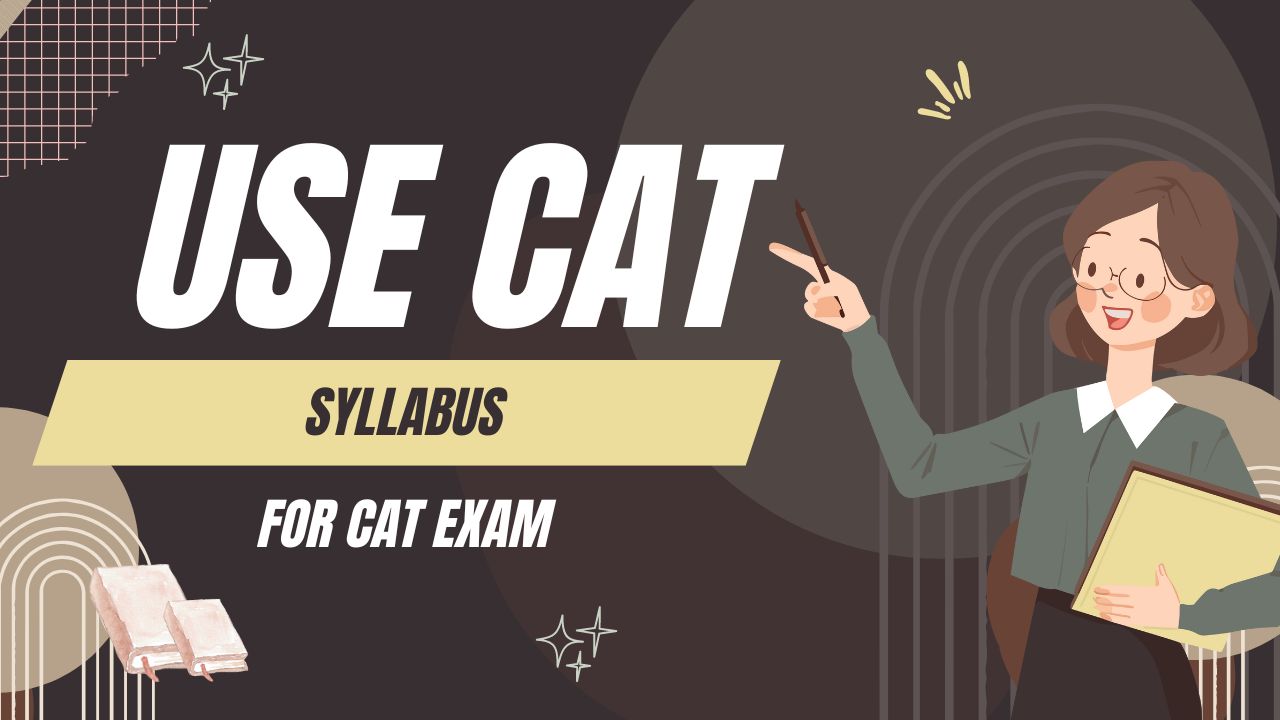
CAT Syllabus is vast and requires a lot of time and patience to cover up efficiently. There is no fixed syllabus for CAT, but the exam is mostly based on middle school Math and English topics.
Students often develop anxiety due to the syllabus they don’t know and the contents they must cover before the exam.
This article will provide detailed information about the CAT exam syllabus, which will help the candidates to overcome their fear of attempting the CAT exam.
CAT Syllabus – Sectional Division
There are three sections in the CAT exam , including both MCQ and non-MCQ types of questions. All these sections carry different weightage.
Listed below are the CAT 2024 sections:
-
Verbal Ability & Reading Comprehension (VARC)
-
Quantitative Ability (QA)
-
Data Interpretation & Logical Reasoning (DILR)
CAT Exam Pattern
Before we discuss the details of the CAT syllabus, candidates must know the exam pattern to estimate the timings and marks per section and other details.
CAT Syllabus: Marking Scheme
The marking scheme for the CAT exam is illustrated in the table below:
CAT Syllabus
Each topic has a different weightage in CAT. Candidates must work on their weaker sections and practice the strong sections to strengthen the core concepts of all the topics. Check the exam topics asked in the CAT exam to keep themselves updated.
Here is a detailed description of the section-wise CAT exam syllabus. Go through these details and strategies your preparation accordingly.
VARC Section
VARC is the first section to be solved in the exam. It has two subparts: Verbal Ability and Reading Comprehension. Take a look at some key points of this section:
For the past few years, this section has mainly focused on 3 topics:
Summary Questions
-
Small passage with 4 options
-
The candidate must find the best summary of the given passage.
-
In these questions, the key is usually to find the options that do not contradict the passage.
-
Once the candidate can eliminate the other options, the right answer will emerge.
Jumbled Paragraphs
-
There is no margin for error as these are TITA-based questions.
-
In these questions, 4-5 sentences are given in order.
-
These sentences form a paragraph, and the aspirant must find the order that best suits the group of sentences.
-
The aspirant needs to identify the paragraph’s first and last sentence.
-
It is quite easy since the first sentence introduces a topic while the last sentence makes some conclusion or judgment.
-
After this, the first sentence should lead to the second, and so on.
Odd Sentence in Paragraph Jumbles
-
These are also TITA-based questions for the past years.
-
Candidates need to identify the sentence which does not match the theme in the rest of the paragraph.
-
These questions may be easy or difficult.
-
It is also possible that a new topic is introduced which is not pursued further.
Reading Comprehension
-
This section consists of questions based on passages.
-
The questions are of three types: Fact-based, Inference-based, and Vocabulary-based.
-
The RC section in CAT 2021 included more inferential questions than CAT 2020, making the section slightly more difficult.
-
The fact-based questions demand answers based on facts mentioned in the passage. They are the easiest questions in this section.
-
The Inference-based questions are trickier since the aspirant has to deduce the tone and theme of the author before answering these questions.
DILR Section
The second section of the CAT exam is DILR. It is further subdivided into two sections: Data Interpretation and Logical Reasoning.
Below are some of the important topics of DILR:
Data Interpretation
-
This section consists of caselets and tables. The data is in the form of bar graphs, column graphs, Venn diagrams, lines and pie charts.
-
The aspirants are asked to solve questions based on the data given in the above formats. Candidates must structure the data intuitively to solve the questions.
-
In certain questions, variables will have to be left untouched.
-
The candidate must solve as many problems as possible and go through the previous years’ papers.
Logical Reasoning
-
The topics of this section consist of numbers and sequences, arrangements, syllogisms, logical sequences, blood relations, calendars, cubes, and clocks.
-
The questions are usually a combination of the other topics.
-
The are many topics in the reasoning section, and the combination can lead to very complicated sets.
-
The major concern with solving questions in the LR section is to solve them as expeditiously as possible.
QA Section
Quantitative Aptitude is the last section of the CAT exam. This section is the largest among the three sections. Most of the time is invested in preparing the QA section, as this section requires lots of practice.
Some of the important topics of QA are as follows:
Conclusion
Candidates must prepare a strategical plan, and for that, it is important to know the CAT syllabus. After knowing the syllabus start your practice and solve mock tests and sample papers to get a hold of the exam pattern. Be thorough in terms of their preparation for the basics. If you prepare according to the CAT syllabus, the room for unpleasant surprises is greatly reduced.